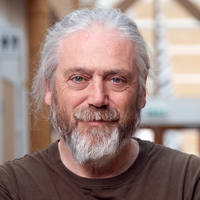
Leverhulme Centre for the Holobiont
The Centre is led by Professor Thomas Bell at Imperial College London, with partners at the Sanger Institute, EMBL’s European Bioinformatics Institute (EMBL-EBI), the Natural History Museum, Royal Botanic Gardens Kew, the Centre for Agriculture and Bioscience International, the Rosalind Franklin Institute, the Mary Lyons Centre, ZSL London Zoo, and the Tara Oceans Consortium.
Studying holobionts and their effects
The term ‘holobiont’ refers to a larger organism – such as a human, animal or plant – together with its associated community of microbes. Many of these microbial communities (microbiomes) affect the health of the host organism. Better understanding of holobionts could help to avert declines in biodiversity.
For example, coral bleaching and die-offs are triggered by high temperatures that cause essential microbes to disassociate from the coral host, causing substantial disruption to the local marine ecosystem.
Centre partners will explore the impact of pesticides on the holobiont of bees, and how the skin microbes of some amphibian species may enable them to fight off a deadly fungus.
Supporting a Green Revolution in agriculture
The second main strand of research aims to support a new sustainable green revolution in agriculture. Plants also combine with microbes to form unique holobionts. Mapping them could help researchers manipulate them, creating crops that pull more nutrients in, reducing fertiliser use, or that are better able to resist pathogens, reducing pesticide use.
Sanger people

Professor Mark Blaxter
Programme Lead for Tree of Life Programme and Senior Group Leader
External partners and funders
External
Imperial College London
External
The Mary Lyon Centre
External
The Natural History Museum
External
The Rosalind Franklin Institute
External
Royal Botanic Gardens Kew
External
The Tara Oceans Consortium
External
